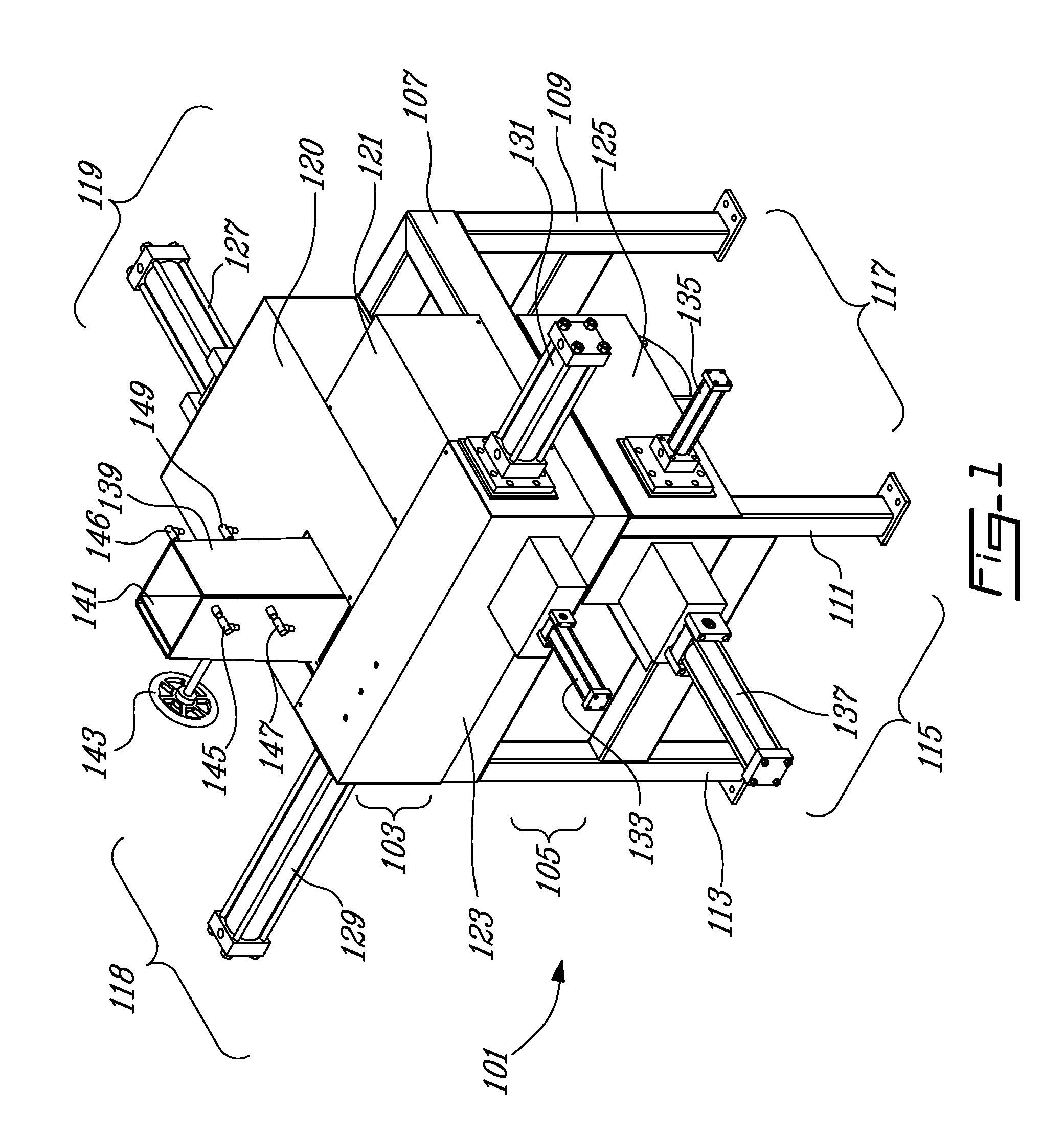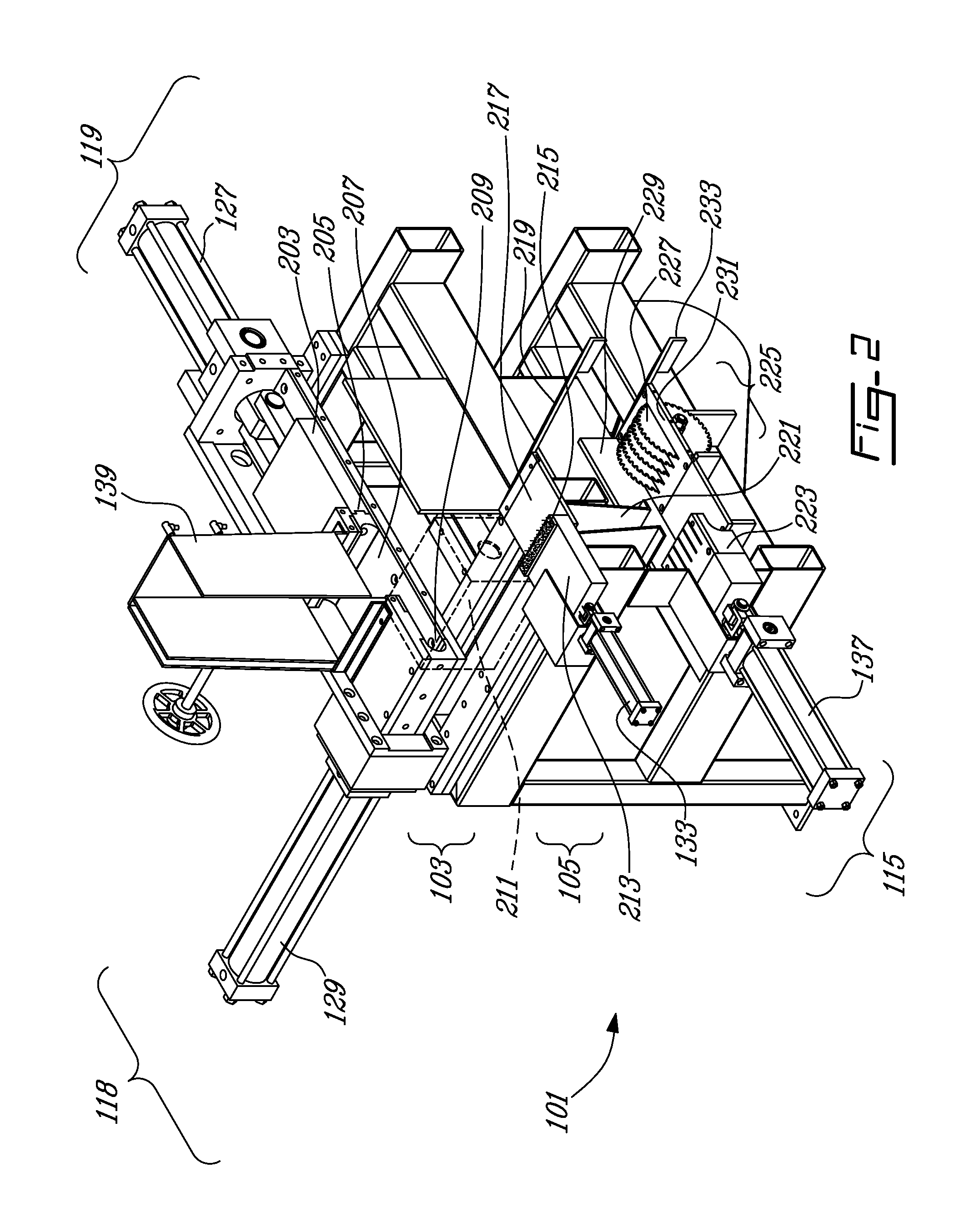Method and mechanical press system for the generation of densified cylindrical briquettes
a technology of mechanical press system and densification method, which is applied in the direction of presses, manufacturing tools, waste based fuel, etc., can solve the problems of degradation and dustiness of pellets, difficult to achieve densification of biomass and waste materials, and high production cost of pellets, so as to facilitate the conversion of a wide range of materials, improve system reliability, and minimize the front-end processing of feedstock.
- Summary
- Abstract
- Description
- Claims
- Application Information
AI Technical Summary
Benefits of technology
Problems solved by technology
Method used
Image
Examples
Embodiment Construction
[0038]Multiple fiber feedstock can be converted to solid briquette ingots using the present invention, including: wood sawdust, wood sanding dust, wood cut-offs, wood pruning residue, peat moss, construction & demolition wood waste, wood & mixed plastics fines resulting from recycling, food-grade waxed cardboard, milk and juice containers, ordinary corrugated cardboard, paper, non-recyclable hard cover books, short & long fiber paper sludge, cotton, linen, synthetic fibers, fibers from old rug waste, waste magnetic tape, agro-food waste fiber, solid digestive byproduct resulting from anaerobic digestion, and dry sludge from waste water treatment plants.
[0039]FIG. 1 shows an example embodiment of the mechanical press 101. The press is constructed on two main levels, the upper level 103 and the lower level 105 arranged respectively above and below a main horizontal frame 107. The horizontal frame 107 is resting on four legs, three of which 109, 111 and 113 are visible in FIG. 1. The f...
PUM
 Login to View More
Login to View More Abstract
Description
Claims
Application Information
 Login to View More
Login to View More - R&D
- Intellectual Property
- Life Sciences
- Materials
- Tech Scout
- Unparalleled Data Quality
- Higher Quality Content
- 60% Fewer Hallucinations
Browse by: Latest US Patents, China's latest patents, Technical Efficacy Thesaurus, Application Domain, Technology Topic, Popular Technical Reports.
© 2025 PatSnap. All rights reserved.Legal|Privacy policy|Modern Slavery Act Transparency Statement|Sitemap|About US| Contact US: help@patsnap.com



